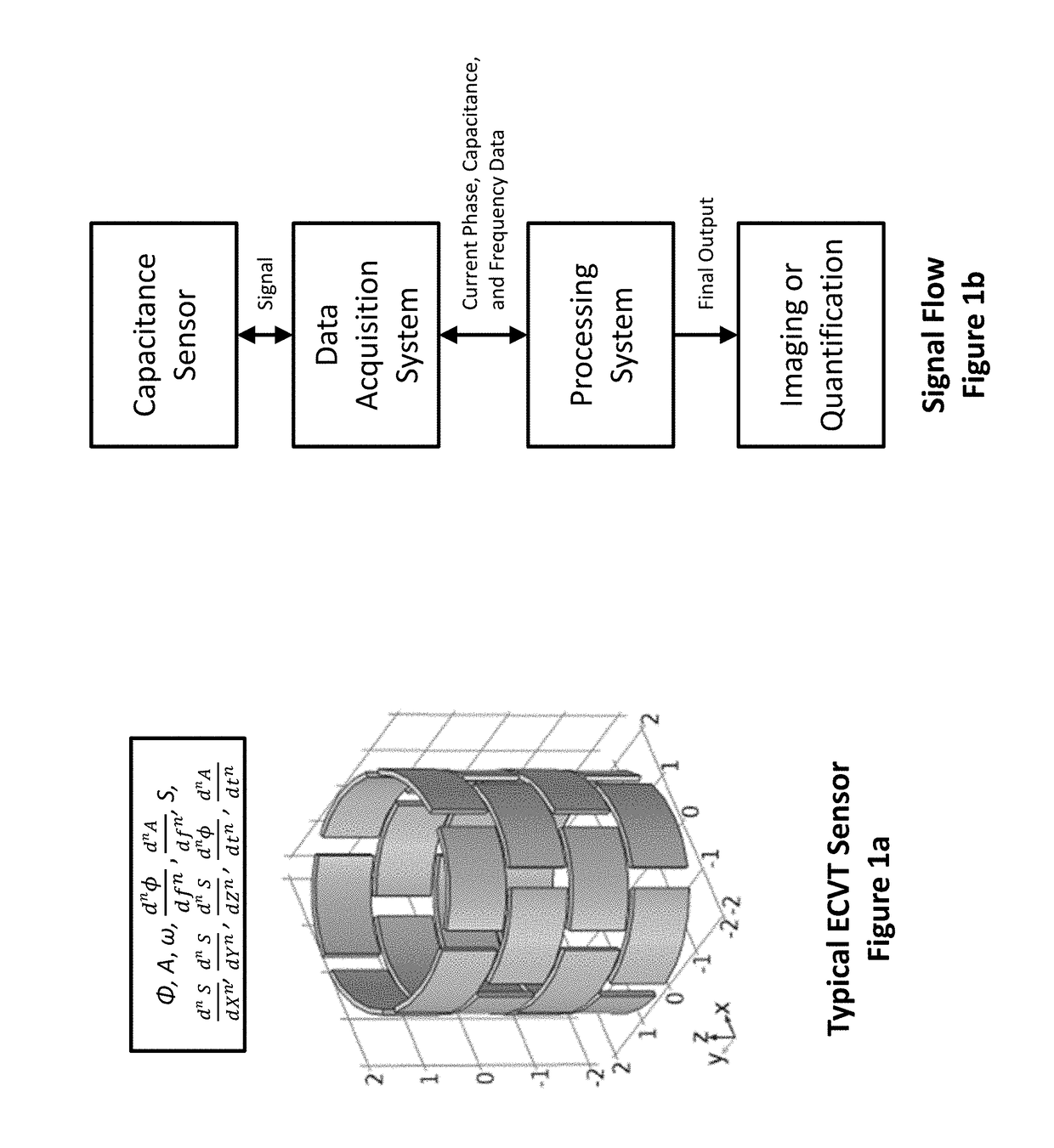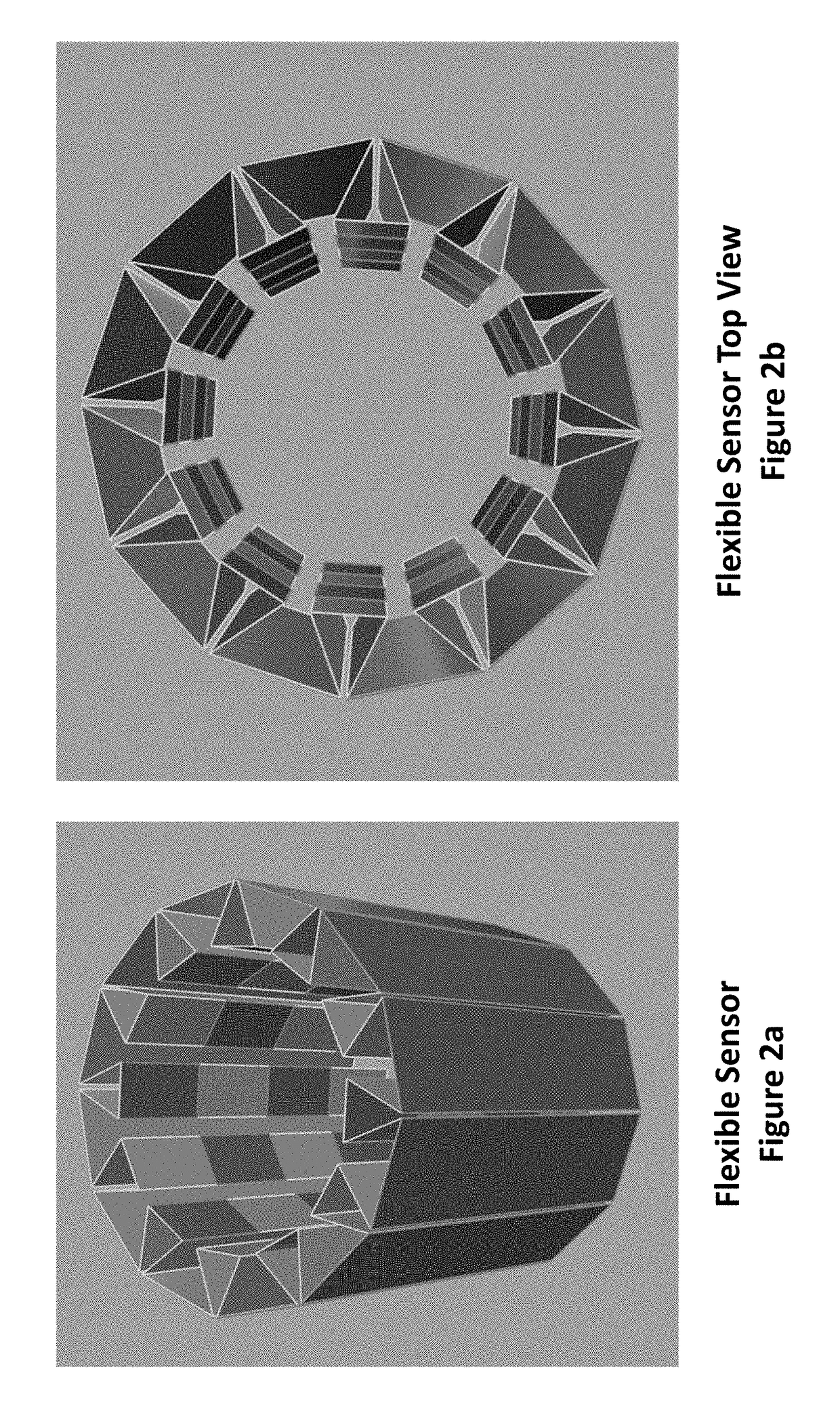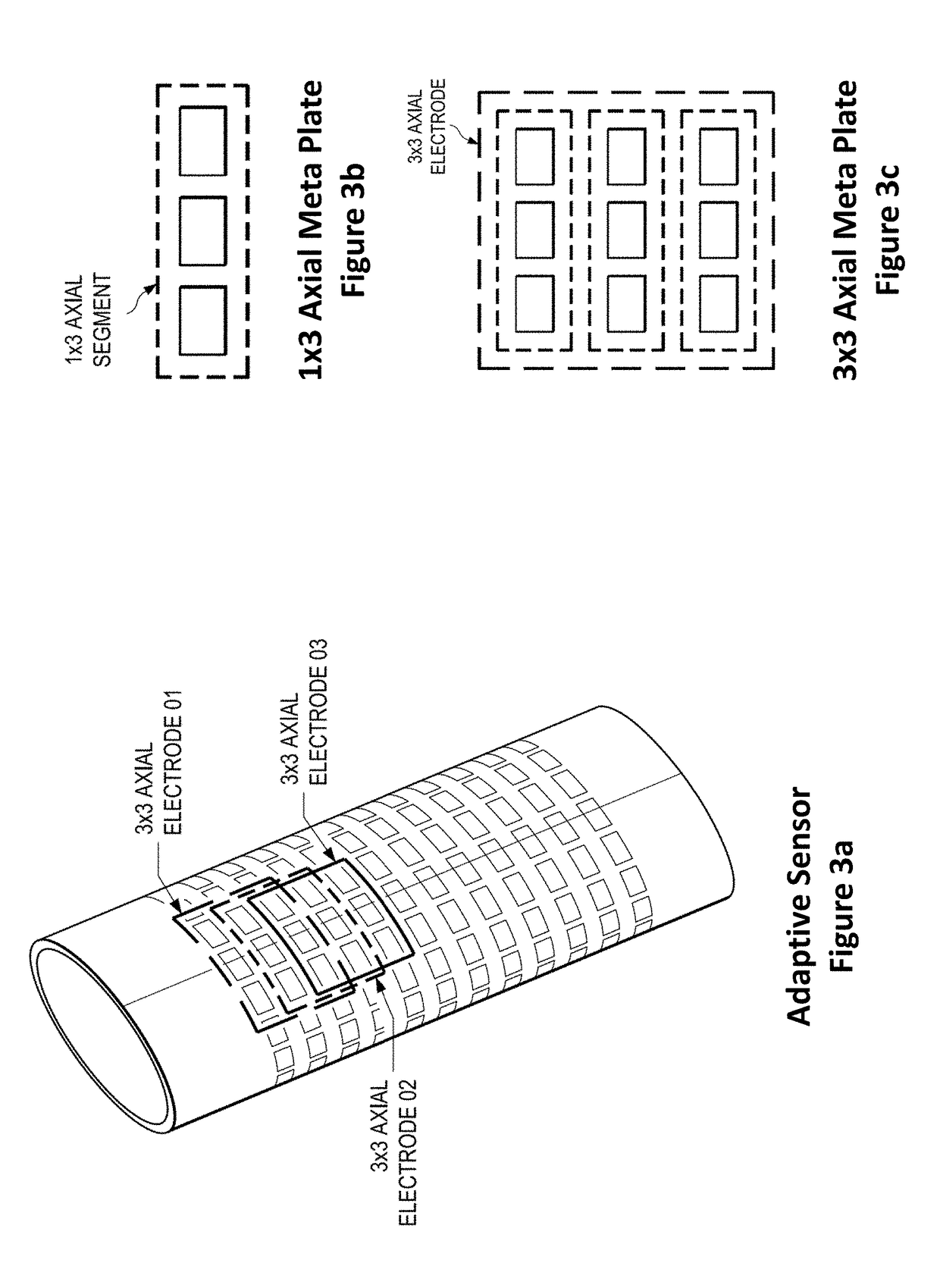Multi-dimensional approach to imaging, monitoring, or measuring systems and processes utilizing capacitance sensors
a capacitance sensor and multi-dimensional technology, applied in the field of multi-dimensional approach to imaging, monitoring, or measuring systems and processes utilizing capacitance sensors, can solve the problems of reducing the maximum number of sensors that can be used in ecvt sensors, limiting the maximum number of sensors, and smallest sensor plate size, so as to achieve the effect of increasing the number of independent capacitance measurements, reducing the minimum area and changing the capacitan
- Summary
- Abstract
- Description
- Claims
- Application Information
AI Technical Summary
Benefits of technology
Problems solved by technology
Method used
Image
Examples
Embodiment Construction
)
[0053]The following detailed description of the exemplary embodiments refers to the accompanying figures that form a part thereof. The detailed description provides explanations by way of exemplary embodiments. It is to be understood that other embodiments may be used having mechanical and electrical changes that incorporate the scope of the present invention without departing from the spirit of the invention.
[0054]FIG. 1a illustrates a typical 24 electrode ECVT sensor with 4 planes of plates. It is appreciated that the sensor shape may be comprised of any size, shape, number, or orientation of plates. The sensor of the present invention may provide information on any of the listed parameters including signal phase, signal amplitude (capacitance), frequency response, or spatial geometry of the sensor. Additionally, any spatial derivative of the geometry (e.g., sensitivity matrix) may be obtained or any time or frequency derivative of signal phase or amplitude.
[0055]FIG. 1b illustra...
PUM
| Property | Measurement | Unit |
|---|---|---|
| volume fraction distribution | aaaaa | aaaaa |
| volume | aaaaa | aaaaa |
| capacitance | aaaaa | aaaaa |
Abstract
Description
Claims
Application Information
 Login to View More
Login to View More - R&D
- Intellectual Property
- Life Sciences
- Materials
- Tech Scout
- Unparalleled Data Quality
- Higher Quality Content
- 60% Fewer Hallucinations
Browse by: Latest US Patents, China's latest patents, Technical Efficacy Thesaurus, Application Domain, Technology Topic, Popular Technical Reports.
© 2025 PatSnap. All rights reserved.Legal|Privacy policy|Modern Slavery Act Transparency Statement|Sitemap|About US| Contact US: help@patsnap.com



